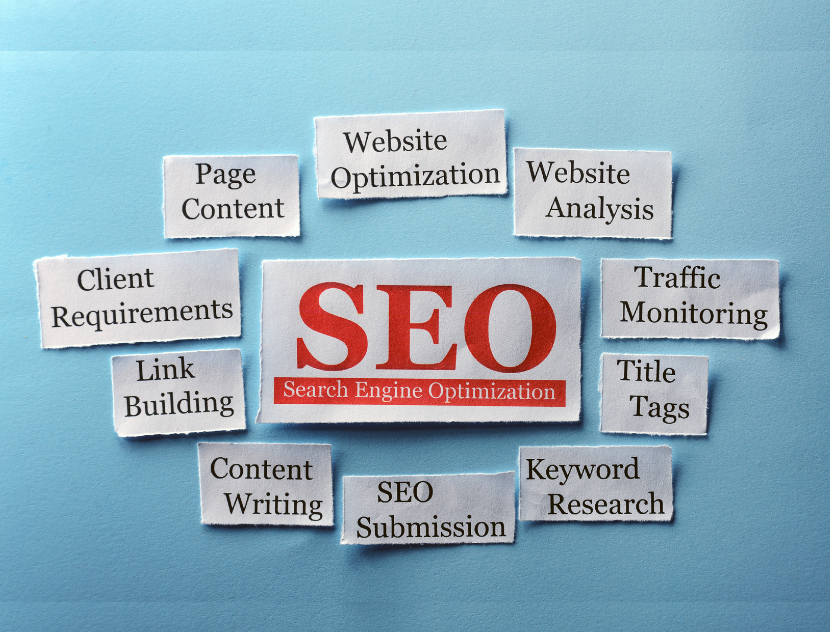In today’s digital landscape, a strong online presence is essential for any business. One effective way to gain visibility is by improving your Google rankings. This blog will explore essential On-Page SEO Techniques to help you enhance your search engine rankings and attract targeted traffic to your site.
Understanding On-Page SEO
On-Page SEO refers to all the optimization techniques that you implement directly on the pages of your website to improve your ranking in search engines. Unlike off-page SEO, which relies on backlinks and external factors, on-page SEO focuses on the elements you can control, such as your content, HTML structure, internal linking, and overall user experience.
The goal of on-page SEO is to ensure that your site is clear and meaningful to Google's algorithm, making it evident what your content is about and how valuable it is to users searching for information.
Why On-Page SEO Techniques Matter
Search engines are constantly evolving, but one fundamental goal remains the same: they strive to provide users with the most relevant and valuable content. By implementing effective on page SEO techniques, you signal to Google that your content deserves to rank higher in search results.
Some of the benefits include the following:
-
Enhanced organic traffic.
-
Enhanced user experience.
-
Improved engagement and higher conversion rates.
-
Improved indexing by search engines.
Essential On-Page SEO Techniques
1. Title Tags and Meta Descriptions
The title tag is the first thing users and search engines see. Each page should have a unique and descriptive title that is under 60 characters and includes a targeted keyword. While meta descriptions don't directly influence rankings, they do impact click-through rates. Create compelling, keyword-rich descriptions that are under 160 characters to improve visibility and drive traffic.
2. Header Tags
Organize your content in a logical manner using headers. Each page should have one H1 tag, which should contain your primary keyword. Use H2 and H3 tags to divide sections, making the content easy for users to scan and for search engines to understand.
3. Keyword Optimization
Incorporate target keywords and their synonyms naturally into your content. Avoid keyword stuffing, and focus instead on semantic relevance. According to SEMrush and Ahrefs, it's beneficial to include LSI keywords that reflect the main theme.
4. Internal Linking
Internal links between your pages help pass link equity and guide users through your website. Use descriptive anchor text and ensure important pages are accessible within three clicks.
5. URL Structure
Short, clean URLs that contain target keywords tend to perform better. Avoid unnecessary parameters and ensure URLs are easy for humans to read.
6. Image Optimization
Use descriptive filenames and alt text for all images. Compress images to ensure faster loading without sacrificing quality. This not only improves SEO but also enhances accessibility.
7. Content Quality and Relevance
Google prioritizes content that is comprehensive, original, and well-structured. Aim to clearly and thoroughly address user queries. Include relevant media and regularly update content.
Website Audit for On-Page SEO
Conduct a thorough audit with tools like Moz, Ahrefs, and SEMrush to evaluate the following aspects: broken links, duplicate content, mobile usability, page speed, and content gaps. Addressing these issues can significantly enhance your rankings and overall SEO health.
Competitor Analysis
Analyzing the top-ranking pages for your target keywords reveals insights into what Google prefers. Look closely at their content length, keyword distribution, internal linking strategy, and multimedia usage. Utilize this information to create even better content that is longer, more engaging, and more valuable.
User Experience Signals (UX)
User behavior metrics like bounce rate, time on page, and pages per session are crucial. Enhance UX by: making content easy to read, using whitespace and uncluttered layouts, ensuring mobile responsiveness, and removing intrusive pop-ups.
Schema Markup and Structured Data
Incorporating structured data helps search engines better understand your content. This can enhance your listings with rich snippets, such as ratings and FAQs, which can increase click-through rates.
Fundamentals of Technical SEO That Support On-Page SEO:
-
Enable HTTPS for secure connections.
-
Develop and submit an XML sitemap for better site navigation.
-
Resolve crawl errors identified in Google Search Console.
-
Minimize unnecessary redirects to improve user experience.
-
Utilize canonical tags to prevent duplicate content issues.
SEO Best Practices Recap
Utilize on-page SEO techniques such as keyword optimization, internal linking, and proper HTML structuring. Focus on creating user-friendly content rather than merely stuffing keywords. Regularly test, audit, and refine your on-page elements to enhance performance.
Conclusion
Acquiring on-page SEO skills is not only about satisfying algorithms; it's about providing genuine value to your users. By optimizing your pages for both users and search engines, you can achieve long-term organic traffic, enhanced engagement, and greater business growth.
Stay focused, conduct regular audits, and keep up with current trends your journey to the top of Google is achievable.





